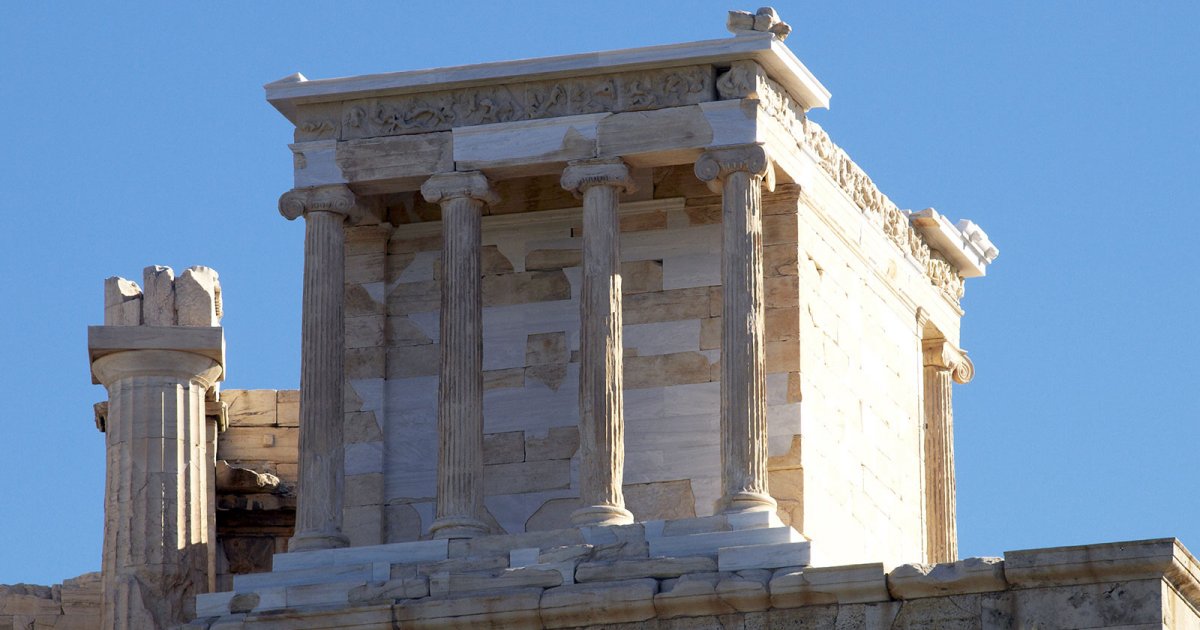ACROPOLIS, Athena Nike And Odeon
 Language: English / USA
Language: English / USA
The Temple of Athena Nike, meaning “victorious”, is the smallest in the Acropolis, and was built by the architect Callicrates around 420 BC, when the golden age of Athens was drawing to a close. Small is not synonymous with less impressive, however: over the centuries, the Pentelic marble has taken on the typical, marvelous golden hue. The style is Ionic throughout, with slender columns on both sides.
The temple is built right on the edge of the precipice near the Propylaia. Legend has it that King Aegeus threw himself to his death here when he saw ships approaching with black sails, because he thought they were to announce the death of his son. To embellish the location, and to avoid such tragedy occurring again, the building was surrounded with a parapet sculpted with scenes of Athena Nike engaged in a variety of activities. One of the most famous reliefs shows her fastening a sandal. These sculptures can also be found in the Acropolis Museum.
The temple housed the wooden statue of Athena Nike with a pomegranate in her hand, symbolizing prosperity. Here the goddess is depicted without wings, which were generally always present on the victory figure: the reason was a desire to prevent her from leaving Athens!
Remember I told you the Acropolis was attacked by the Venetians? To defend themselves, the Turks demolished the temple to build a defensive bastion near the Propylaia. It was not until the 19th century, thanks to the patience of archaeologists, that the various pieces of it were recovered and the temple was rebuilt.
Now press pause and move to the left, to the edge of the cliff.
If you look out towards the unique view of the extremely steep steps that descend like a funnel to the bottom, you’ll see a small amphitheater with a semicircular orchestra pit and a stage closed off by a large wall that was once richly decorated with columns. This is the Odeon, a small theatre used for musical performances. It was built by the wealthy benefactor Herodes Atticus, between 174 and 161 BC in memory of his wife.
An interesting fact: although Herodes Atticus was born in Athens and was the son of an Athenian banker, he was a Roman consul who became governor of Greece, and was one of the richest men of his time.
Our visit to the Acropolis ends here. MyWoWo would like to thank you - see you again at another Wonder of the World!



